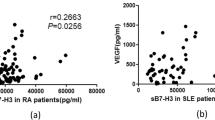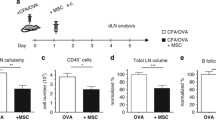Abstract
Endothelial cells are involved in important pathological situations. They could be the target for infectious processes as for example in Cowdriosis, an important disease in cattle due to the rickettsia Cowdria ruminantium prevalent in the south of the Sahara. They are also connected to angiogenic processes related to tumor invasion.
Our results indicate that AIDS related Kaposi sarcoma cells may be of endothelial origin. We conclude from our data the mobility of those cells, related to the expression of the metalloproteinases (especially the 92 kD form of the enzyme), is an important factor in Kaposi saroma dissemination and is the main factor limiting the scale up of Cowdriosis vaccine production in Bovine Umbilical Endothelial Cell line. We showed that PMA and TNF increased the 92 kD Metallaproteinase and that TGFβ, produced in an inactive form in cultures of Human Umbilical Vein Endothelial Cells, is a potential inhibitor of Kaposi sarcoma spreading, and could also be useful in improving our process for Cowdria ruminantium vaccine production, since it reduces the sensitivity of the cells to mechanical stress without affecting significantly the overall infectious process.
Similar content being viewed by others
References
Alloin C, Marique T., Paul T, Lowagie S, Zilimwabagabo P, Skup D and Wérenne J (1996) Metabolic engineering and control of mammalian cells for increased adhesion properties: Improvements for a rickettsia vaccine production, Cytotechnology, 21 abst, 3.
Blankaert D, Parent D, Farber CM, Van Vooren JP, Liesnard C and Wérenne J (1994) Metalloproteinases and TIMPs production by AIDS Kaposi sarcoma derived cells, in Animal Cell Technology: Products of Today, prospects of tommorrow, Spier RE, Griffiths JB and Berthold W (eds), Butterworth-Heinemann, Oxford, 638–642.
Coulombe B, Severin JE, Marique T, Ponton A, Wérenne J and Skup D (1989) The tissue inhibitor of Metalloproteinase (STIMP): Gene expression in mammalian cells, in Animal Cell Technology: Advances in Animal cell Biology and Technology for Bioprocesses — Spier RE, Griffiths JB, Stephenne J and Crooy PJ (eds). Butterworth, 187–191.
Duvar S, Mühting J, Mohr H and Lehman J (1996) Scale up cultivation of primary human umbilical vein endothelial cells on microcarriers from spinner vessels to bioreactor fermentation, Cytotechnology, 21: 61–72.
Fajardo LF (1989) The complexity of endothelial cells. Am. J. Clin. Pathol. 92: 241–250.
Folkman J and Shing Y (1992) Angiogenesis. J. Biol. Chem. 267: 10.931–10.934.
Gimbrone Jr MA, Cotran RS and Folkman J (1974) Human vascular endothelial cells in culture. Growth and DNA synthesis. J. Cell. Biol. 60: 673–682.
Heusen C and Dowdle EB (1980) Electrophoretic analysis of plasminogen activators in polacrylamide gels containing SDS and copolymerized substrate. Anal. Biochem. 102: 192–202.
Jaffe EA (1987) Cell biology of endothelial cells. Hum. Pathol. 18: 234–238.
Lassale P, Lagrou C, Wietzerbin J, Stehelin D, Tonnel AB and Capron A (1992) Human endothelial cells transfected by SV40 T antigen: characterization and potential use as a source of normal endothelial factors. Eur. J. Immunol. 22: 425–431.
Marique T, Blankaert D and Wérenne J (1991) Production of collagenase by anchorage dependent cells in culture, in Animal cell Technology: Developments, Processes and Poducts, Spier RE, Griffiths JB and Mac Donald C (eds). Butterworth, 543–546.
Simonart T, Noel JC, Liesnard C, Parent D, Heenen H, Brancart B, Van Vooren JP, Farber CM, Blankaert D and Wérenne J (1996) Kaposi's sarcoma and Herpes 8: a word of caution, Dermatology, 193: 272.
Totté P, Blankaert D, Marique T, Kirkpatrick C, Van Vooren JP and Wérenne J (1993) Bovine and human endothelial cell growth on collagen microcarriers and their infection with the rickettsiae Cowdria ruminantium, Revue Elev. Méd vét. trop. 46: 153–156.
Totté P, Blankaert D, Marique T, Vachiery N, Teixeira-Guerra I, Kirckpatrick C, Van Vooren JP and Wérenne J (1994) Endothelial cells and their infection with Cowdria ruminantium: prospects for vaccine production, in Animal Cell Technology: Products of Today, Prospects for tomorrow, Spier RE, Griffiths JB and Berthold W (eds). Butterworth, 643–645.
Totté P, Jongejan F, de Gee ALW and Wérenne J (1994) Production of interferon alpha in Cowdria ruminantium infected cattle and its effect on infected endothelial cell culture, Infection and Immun. 62: 2.600–2604.
Totté P, Vachiery N, Martinez D, Trap I, Ballingall KT, Mac Hugh ND, Bensaid A and Wérenne J (1996) Vet. Immunol. and Immunopathol. 53: 61–71.
Rights and permissions
About this article
Cite this article
Marique, T., Blankaert, D., Hendrick, V. et al. Biological response of endothelial cells and its modulation by cytokines: prospects for therapy and bioprocesses. Cytotechnology 25, 183–189 (1997). https://doi.org/10.1023/A:1007928203997
Issue Date:
DOI: https://doi.org/10.1023/A:1007928203997




